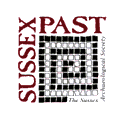Sussex Archaeological Collections: Relating to the history and antiquities of the counties of East and West Sussex
Sussex Archaeological Society, 2000. (updated 2022) https://doi.org/10.5284/1000334. How to cite using this DOI
Data copyright © Sussex Archaeological Society unless otherwise stated
This work is licensed under the ADS Terms of Use and Access.
Primary contact
Jaime
Kaminski
Sussex Archaeological Society
Barbican House
169 High Street
Lewes
BN8 1YE
Resource identifiers
- ADS Collection: 285
- DOI:https://doi.org/10.5284/1000334
- How to cite using this DOI
A prehistoric and later medieval agricultural landscape at Dean Way, Storrington
by Christine Howard-Davis &
Bryan Matthews
with contributions by
Kate Cramp
Malcolm Lyne

Excavations at Dean Way, Storrington revealed a palimpsest agricultural landscape incorporating elements dating from at least the 1st millennium BC to the 20th century. Evidence of earlier activity, in the form of late Mesolithic microliths and a range of Neolithic flintwork, was found as largely residual material in later contexts. Analysis determined four phases of development on the site. Phase 1 was long-lived, and represents intermittent domestic and agricultural activity over an extended period, possibly from as early as the mid?late Neolithic to the late Bronze Age/early Iron Age. Phase 2, a rectilinear field system and again long-lived, was possibly late Iron Age in origin, but might have been considerably later. Phase 3, parallel field boundaries and tracks, appears to have been of later medieval date and onwards, and Phase 4, plough and topsoils, is relatively recent.





